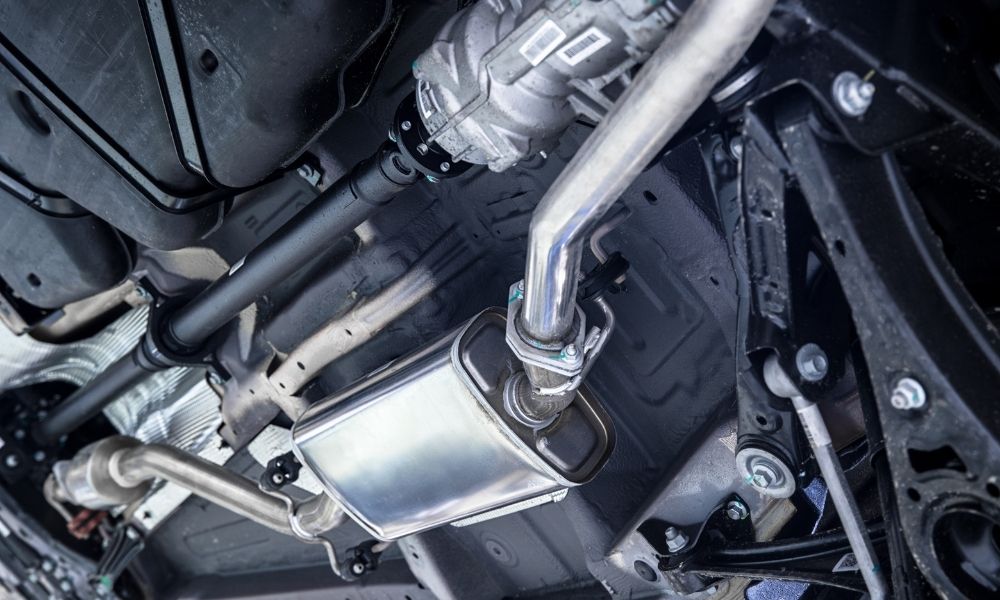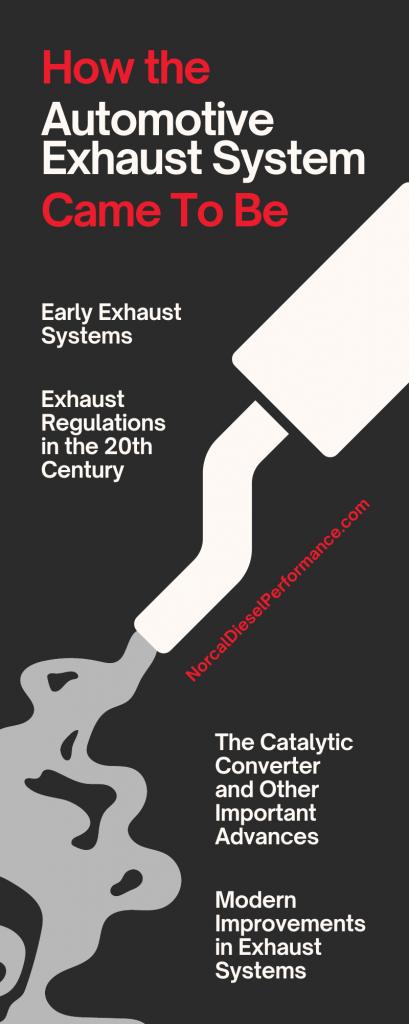


Whether you’re a self-taught expert in the world of automobiles or you’ve never owned a vehicle before, there’s no denying that we can sometimes take how incredible these machines are for granted. Cars and trucks can’t run without a vast array of different systems all working in tandem to make sure that we can get where we need to be. It’s safe to say many people don’t consider how their vehicle works, as long as it gets them from point A to point B.
If you feel differently and want to learn a little bit more about how these essential machines function, we’re on your side. Take any vehicle’s exhaust system, for example. Someone less informed might think that an exhaust system is just a bunch of tubes. While that isn’t necessarily wrong, exhaust systems have come a long way since their original designs. We’ll go over the history of how the automotive exhaust system came to be to get a better idea of how much effort has gone into making these vehicles run as well as they do.
While exhaust systems are essential to our vehicles functioning correctly, that isn’t the only purpose they serve. Originally, exhaust systems on vehicles became a standard when concerns about emissions and smog became more widespread. Industrialization was the first time in human history when smog became a serious concern. Throughout the 1800s, many states in the US started to implement laws about the amount of smoke that could be considered a hazard.
It wasn’t really until after WWII that people started to notice that visible smog had become a serious issue. In particular, Los Angeles had (and to an extent, still has) a dense layer of smog that you can actually see which was caused by emissions from vehicles and factories. Around this time, researchers determined that emissions from vehicles had a huge impact on the environment. As a result, agencies such as the Environmental Protection Agency began to implement new laws that fought against climate change.
When we consider how the automotive exhaust system came to be, a good place to start is in the early 1960s. It was then that the first exhaust purification devices began to roll out into passenger cars, rather than being exclusively used in commercial uses. These early exhaust systems weren’t immensely different than modern ones, but they were quite a bit less elegant in how they went about cleaning a vehicle’s exhaust. They got the job done, but not in the most efficient or effective ways.
Many of these early exhaust systems focused on reducing exhaust components such as carbon monoxide and hydrocarbons. While this certainly improved vehicle emissions, it also required automakers to completely rethink their engines and exhaust system setups in order to keep their vehicles running the same way. Many earlier exhaust systems came with tradeoffs in the form of other kinds of emissions, such as nitrogen-based exhaust, and even worse fuel efficiency.
You could argue that many of our vehicles’ modern exhaust systems wouldn’t exist if it weren’t for the tight government restrictions that resulted from research revealing the dangers of emissions. In response to these restrictions, automakers had to consider how they could reduce the effects of their automobiles on the environment without sacrificing beloved car features.
Restrictions on liner exhaust, such as carbon monoxide, were the first ones that the Environmental Protection Agency implemented. Later on, this expanded to include nitrogen oxide emissions as well. Exhaust standards have only gotten more restrictive and more difficult to meet over time. This is overall a net positive, as it does protect our environment from a major source of damage. It also created a new layer of competition in the automobile industry. Automakers could no longer only boast about how fast their vehicles were or how much power they possessed. They now also had to consider how clean they were for the environment as the public’s opinion took a massive shift toward environmental sustainability during the last few decades.
The catalytic converter is perhaps one of the most important inventions in the world of modern automotive exhaust systems. We attribute the invention of the catalytic converter to French inventor Eugene Houdry, who patented the catalytic muffler in the 1960s. The catalytic converter he created was, and still is, extremely effective at reducing the amount of carbon dioxide and hydrocarbons that automobiles release into the atmosphere. While there have been improvements in the catalytic converter’s design, the basic principles have remained the same for decades.
Other advances in exhaust system technology took place throughout the later 20th century. As we stated before, many of these advances, such as activated carbon tanks and gas recirculation valves, were the direct result of heightened emission standards for vehicles. Over time, the solutions that engineers came up with for these exhaust system issues had to become more and more sophisticated. Systems that were once manual and mechanical in nature had to switch to digital alternatives for increased precision and control.
Regulations surrounding vehicle exhaust have only become stricter as time passes. This means that automakers are hard at work trying to find ways to reduce their emissions and protect the environment. Computers are far more common in vehicles now than ever before, and they allow us to get a better grasp on the emissions crisis.
Mufflers have also become more advanced than ever before. This allows for reduced noise pollution as vehicles expel emissions through the exhaust. If you’re the kind of person that enjoys the roar of a good engine, modern technology makes it so you don’t actually have to sacrifice those sounds you love just to help protect the environment and meet emission standards.
If you’re looking for upgrades and parts for diesel exhaust systems for Ford and Dodge trucks, Norcal Diesel Performance is sure to have what you need. If you can’t find exactly what you’re looking for, don’t hesitate to give us a call, and we’ll be glad to help you out!

You must login to post comments.